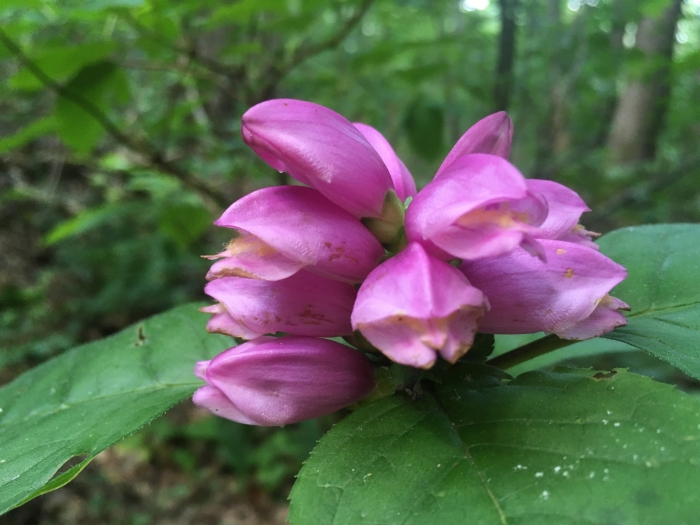Pink Turtlehead
(Chelone lyonii)
Pink Turtlehead (Chelone lyonii)
/
/

Scott Morris
CC BY 4.0
Image By:
Scott Morris
Recorded By:
Copyright:
CC BY 4.0
Copyright Notice:
Photo by: Scott Morris | License Type: CC BY 4.0 | License URL: http://creativecommons.org/licenses/by/4.0/ | Rights Holder: Scott Morris | Publisher: iNaturalist | Date Created: 2021-09-10T17:13:07Z |











































































Estimated Native Range
Summary
Chelone lyonii, commonly known as Pink Turtlehead or Lyon’s Turtlehead, is a perennial herb native to rich, moist woodlands and stream banks in the southern Appalachian Mountains of the United States. This plant typically grows to a height of 2-3 feet (0.6-0.9 meters) and spreads 1-2 feet (0.3-0.6 meters). It features upright stems with dark green, lance-shaped leaves and produces dense spikes of pink, snapdragon-like flowers that resemble a turtle’s head, hence the name. The flowers bloom from late summer to early fall and are quite showy, attracting pollinators such as bees and butterflies.
Pink Turtlehead is valued for its unique flower shape and its ability to thrive in moist, shady conditions, making it an excellent choice for rain gardens, woodland gardens, and naturalized areas. It is also deer-resistant, which is a significant benefit in areas with high deer populations. While it prefers part shade, it can tolerate full sun if provided with consistent moisture. The plant is adaptable to a variety of soil types, provided they are kept moist. Cultivars like ’Hot Lips’ and ’Pink Temptation’ offer variations in flower color and size. Gardeners should be aware that Chelone lyonii can be susceptible to rust and leaf spot diseases, and in some conditions, it may spread aggressively.CC BY-SA 4.0
Pink Turtlehead is valued for its unique flower shape and its ability to thrive in moist, shady conditions, making it an excellent choice for rain gardens, woodland gardens, and naturalized areas. It is also deer-resistant, which is a significant benefit in areas with high deer populations. While it prefers part shade, it can tolerate full sun if provided with consistent moisture. The plant is adaptable to a variety of soil types, provided they are kept moist. Cultivars like ’Hot Lips’ and ’Pink Temptation’ offer variations in flower color and size. Gardeners should be aware that Chelone lyonii can be susceptible to rust and leaf spot diseases, and in some conditions, it may spread aggressively.CC BY-SA 4.0
Plant Description
- Plant Type: Herb
- Height: 2-4 feet
- Width: 1.5-2.5 feet
- Growth Rate: Moderate
- Flower Color: Pink
- Flowering Season: Summer, Fall
- Leaf Retention: Deciduous
Growth Requirements
- Sun: Full Sun, Part Shade
- Water: Medium, High
- Drainage: Slow
Common Uses
Bee Garden, Bird Garden, Border Plant, Butterfly Garden, Deer Resistant, Erosion Control, Hummingbird Garden, Rabbit Resistant, Showy Flowers, Street Planting, Water Garden
Natural Habitat
Rich, moist woodlands and stream banks in the southern Appalachian Mountains
Other Names
Common Names: Lyon’s Turtlehead
Scientific Names: , Chelone lyonii, Chelone major, Chlonanthes latifolia,
GBIF Accepted Name: Chelone lyonii Pursh